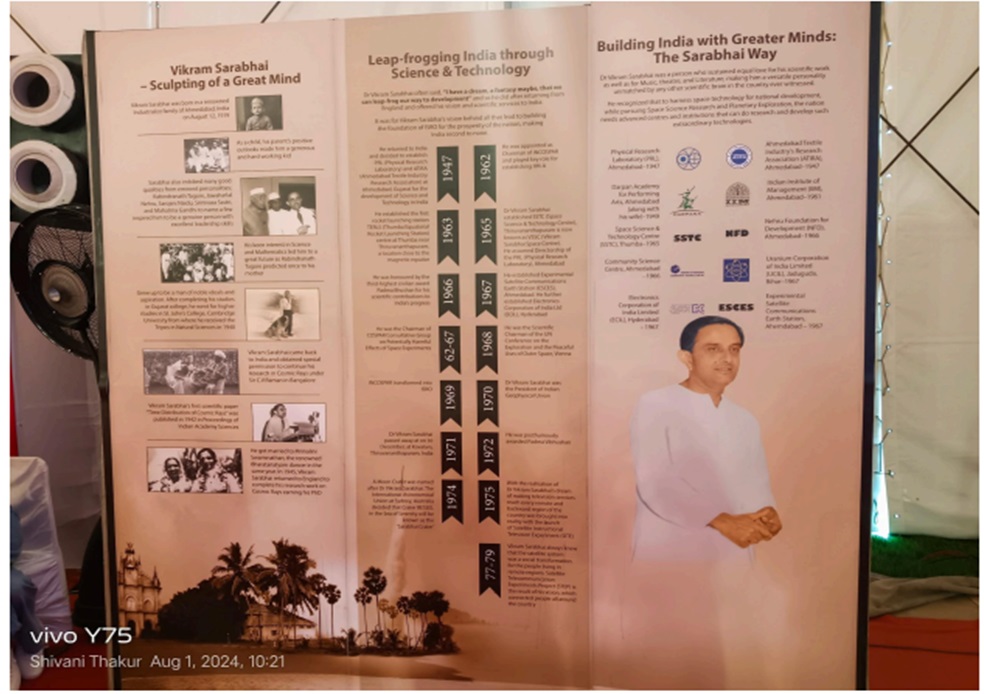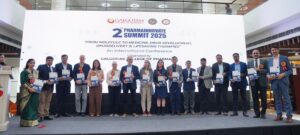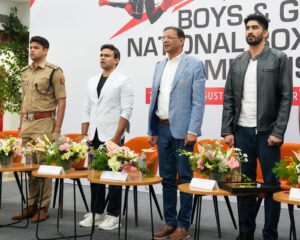Shivani Singh(22smcs1010105)

A special space exhibition at Galgotias University, in collaboration with the Indian Space Research Organisation (ISRO), featured several highlights, including interactions with scientists and the distinguished guests, HON’BLE Mr. Nilesh M. Desai, Director of the Space Applications Centre, and HON’BLE Dr. Rajendra Singh, known as the Waterman of India. The event included a Space Science & Technology Exhibition, Space on Wheels, and demonstrations of rocket launches.
The exhibition celebrated the contributions and passion for scientific work of Vikram Sarabhai, a versatile and unparalleled scientific mind in India’s history. Sarabhai’s early interest in science and mathematics paved the way for his illustrious career. His first scientific paper, “Time Distribution of Cosmic Rays,” was published in 1942 in the proceedings of the Indian Academy of Science.
Dr. Vikram Sarabhai often expressed his vision with the words, “I have a dream, a fantasy maybe, that we can leap-frog our way to development.” True to his words, after returning from England in 1947, he established the Physical Research Laboratory (PRL) and the Ahmedabad Textile Industry Research Association (ATIRA) in Gujarat, Ahmedabad, to promote science and technology in India. In 1962, he was appointed as the Chairman of INCOSPAR and played a pivotal role in establishing the Indian Institute of Management Ahmedabad (IIM-A).
Vikram Sarabhai founded the Thumba Equatorial Rocket Launching Station (TERLS) at Thumba near Thiruvananthapuram, the first of its kind in India. He also established the Space Science & Technology Centre (SSTC), now known as the Vikram Sarabhai Space Centre (VSSC), in 1966. For his scientific contributions, he was honored with the Padma Bhushan in 1966. In 1969, INCOSPAR evolved into ISRO, and Sarabhai became the president of the Indian Geophysical Union.
The exhibition also showcased the achievements of ISRO, including Chandrayaan I, India’s first mission to the moon, launched on October 22, 2008, and Chandrayaan II, aimed at expanding lunar scientific knowledge through the study of the moon’s topology. It highlighted Gaganyaan, India’s human spaceflight program, and Aditya-L1, the first Indian mission to study the sun. The main objectives of Aditya-L1 are to understand the physical processes that heat the solar corona, accelerate the solar wind, and produce coronal mass ejections (CMEs). The exhibition concluded with the Mars Orbiter Mission (Mangalyaan), India’s mission to Mars, which demonstrated the country’s technological capability to build, launch, navigate, and place an unmanned spacecraft into the orbit of the Red Planet.

